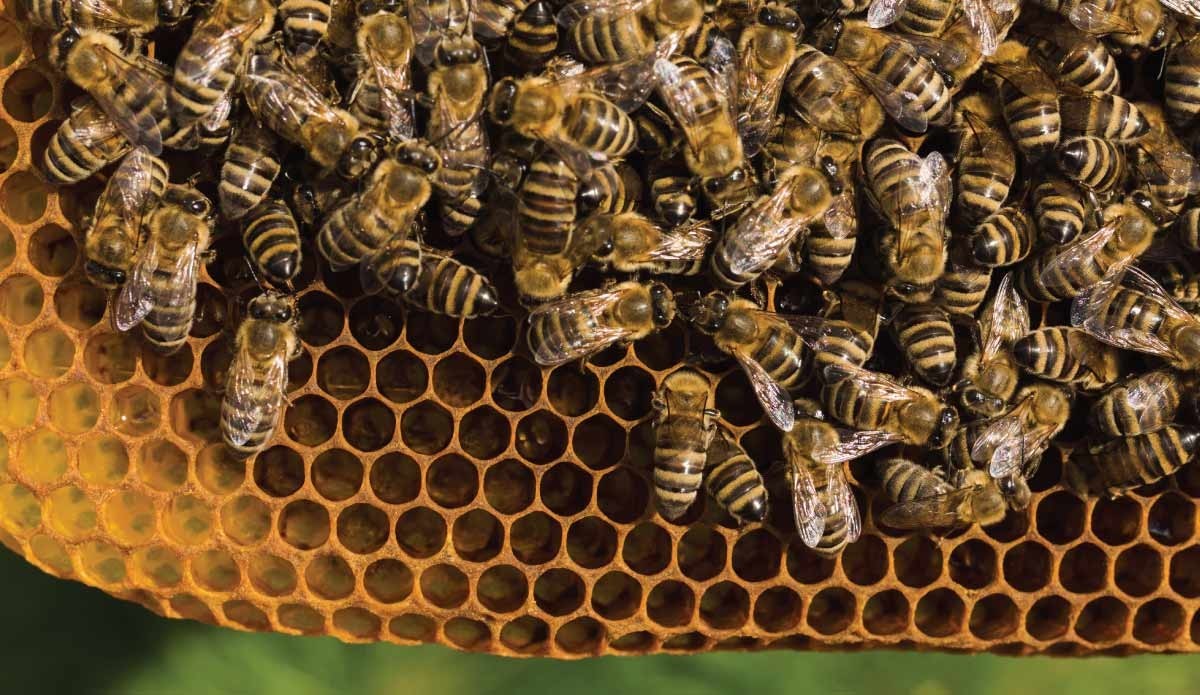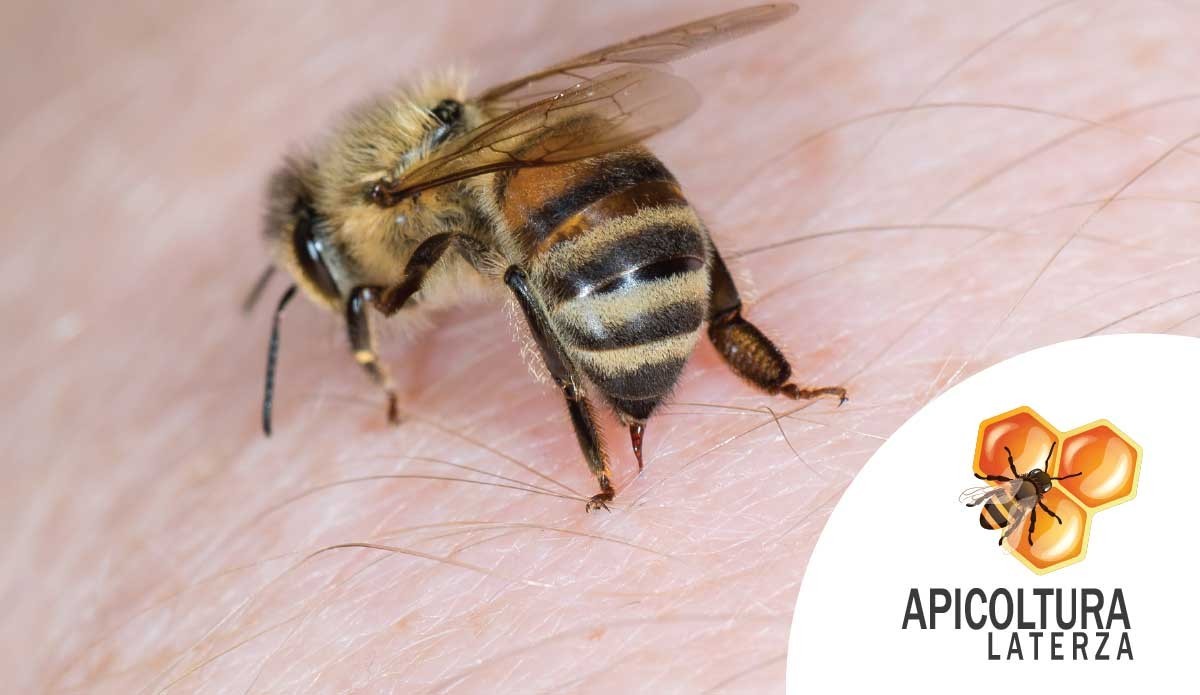Bee Swarming: Meaning, Season, and Tips to Prevent It

Bee swarming is a fascinating natural phenomenon but, at the same time, can pose a significant challenge for beekeepers. This phenomenon is the way bees ensure the survival and spread of their species, but for the beekeeper, it can mean losing a significant part of the colony and therefore a reduction in honey production.
In this article, we will explore the meaning of swarming, when and why bees swarm, how to prevent it, and what tricks can be adopted to avoid losing colonies. Apicoltura Laterza, with its extensive experience, will guide you through all aspects of this fundamental event for Italian bees.
Bee swarming is a fascinating natural phenomenon but, at the same time, can pose a significant challenge for beekeepers. This phenomenon is the way bees ensure the survival and spread of their species, but for the beekeeper, it can mean losing a significant part of the colony and therefore a reduction in honey production.
In this article, we will explore the meaning of swarming, when and why bees swarm, how to prevent it, and what tricks can be adopted to avoid losing colonies. Apicoltura Laterza, with its extensive experience, will guide you through all aspects of this fundamental event for Italian bees.
Bee Swarm Meaning
Swarming is a natural phenomenon that occurs in bee families when part of the colony, led by an old queen, leaves the hive to establish a new home.
This process aims to form a new family and represents one of the ways bees reproduce at the colony level. In practice, swarming is the mechanism through which a colony splits, creating a new colony in a different location. The new home can be a hollow tree, a ground cavity, or any space that offers protection and shelter.
Why Do Bees Swarm?
Bees swarm for various reasons, but the most common is when the hive becomes overcrowded. When the number of bees increases and space becomes insufficient, the worker bees start building queen cells, preparing for the birth of new queens. This usually happens in spring when natural resources are abundant, and the bee family expands rapidly.
Another reason bees may swarm is the presence of an old, unproductive, or sick queen. In this case, the bees decide to create new queens to ensure the colony's continuity. Additionally, environmental factors such as sudden climatic changes or resource scarcity can prompt the colony to seek a new home.
Bee Swarming Season
The most common time for swarming is spring, but it can also occur in summer. Generally, there is a greater tendency to swarm when environmental conditions are favorable, with an abundance of nectar and pollen.
Two days before swarming, the old queen reduces egg-laying to lighten herself and prepare for flight. During this period, worker bees accumulate honey reserves to ensure sufficient energy for flight and adaptation to the new home. Therefore, swarming is a planned process by the colony, where each bee plays a specific role to ensure the new family's success.
How to Recognize Swarming
Recognizing swarming in time is essential to intervene and prevent the loss of part of the colony. Experienced beekeepers know there are several warning signs indicating imminent swarming. First of all, one of the main clues is observing the brood combs.
If royal cells are noticed, especially in large numbers, it may mean the colony is preparing to create new queens. Royal cells are larger than normal cells and have an acorn-like structure, often located at the edges of the comb.
Another obvious sign is the behavior of worker bees. When bees start feeding larvae with royal jelly intensively, it can be assumed they are preparing new queens. This behavior often coincides with frantic activity around the royal cells.
Moreover, the change in the queen bee's behavior is important: in the days leading up to swarming, the old queen reduces the number of eggs laid and appears less active, as she is lightening up in preparation for the flight. Therefore, careful observation of the colony's general behavior is crucial.
Another significant sign is the hive noise. In the days before swarming, bees produce a more intense and continuous buzzing, as if there is agitation in the hive. This is due to the colony's excitement about the imminent division. Often, scout bees start flying around the hive looking for potential new homes.
Finally, when you see bees clustering at the hive entrance or gathering outside without any apparent reason, swarming is likely imminent. This behavior occurs especially two days before the main group separates when the colony is already buzzing with anticipation of leaving the old home.
Worker bees feed the larvae in these cells with royal jelly, leading to the birth of virgin queens. Secondary and tertiary swarms can form if multiple queens emerge simultaneously, creating further divisions of the parent colony. The presence of multiple queens can cause conflicts among the new queens, who try to eliminate each other to establish dominance. The noisy and restless behavior of bees in the days before swarming is another clue not to overlook.
Tips to Prevent Swarming
Preventing swarming can be complex, but some techniques can reduce the risk. Among the most effective tricks, constant hive inspection to avoid the formation of too many royal cells and the timely destruction of royal cells can be decisive.
Additionally, creating artificial nuclei can help maintain a stable number of bees without causing a loss of the main family. Another method involves adding empty combs to increase the available space, thus reducing colony stress. Periodically replacing the old queen with a younger, more productive one can also help maintain harmony within the hive.
The Phenomenon of Swarming: A Natural Aspect
Although swarming may seem like a problem for beekeepers, it is important to remember that it is a natural process. Bees, like all living beings, strive to ensure their species' survival by creating new colonies and spreading genetic heritage.
If swarming cannot be avoided, it is useful to monitor bee movements to recover the new swarm and reintegrate it into a hive. Finding the new colony immediately helps avoid completely losing the escaping population and allows the continuation of honey production.
Italian Bees: A Heritage to Preserve
Italian bees are one of the most appreciated varieties in the beekeeping world due to their uniqueness. Known for their docility and high productivity, these bees are well-suited to stationary and migratory apiaries. Their ability to adapt to temperate climates and their inclination to produce high-quality honey make Italian bees a preferred choice for many beekeepers.
One of the main features of Italian bees is their lower tendency to swarm compared to other subspecies. However, like all bees, they can still swarm when the colony becomes overcrowded or the queen's egg-laying efficiency decreases.
Italian beekeepers, aware of these bees' peculiarities, adopt specific techniques to prevent swarming, such as carefully monitoring royal cells and managing queens efficiently.
Thanks to their robustness and ability to gather nectar even in less favorable conditions, Italian bees significantly contribute to biodiversity and agricultural production. Preserving this variety means not only ensuring quality beekeeping but also protecting a natural and cultural Italian heritage.
Conclusion
Bee swarming is a complex and fascinating phenomenon that requires knowledge and careful management by the beekeeper. Knowing the swarming season and adopting preventive tricks allows maintaining control over the colonies while ensuring apiary productivity. Apicoltura Laterza supports beekeepers by providing practical advice and continuous assistance in managing bee families.






